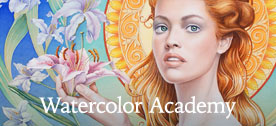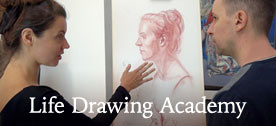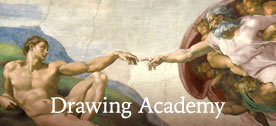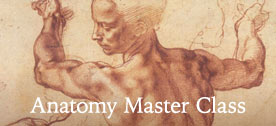Art Lesson 42, Part 5
Discover how to Oil Paint a Full-Face Female Portrait
Learn how to paint like the Old Masters!
Old Masters Academy Online Course
Self-study, self-paced online video course Lifetime membership One-time payment: $487 Enroll Now!Personal Tutoring online + Online Course
Unlimited tutoring by the Academy teachers Lifetime membership One-time payment: $997 Enroll Now!« Back to the Art Lessons List
How to Oil Paint a Full-Face Female Portrait
Session One
The face of Madonna
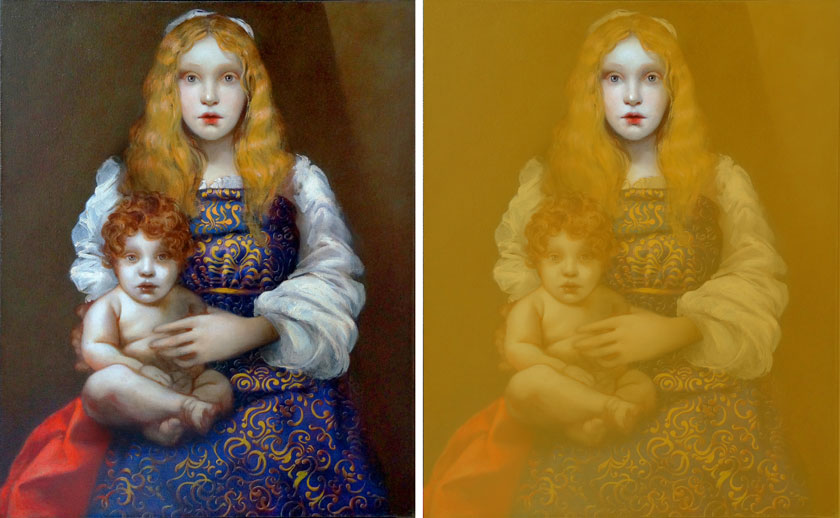
We are ready to proceed with layers in full Color. At this point, the Grisaille Underpainting should be completely dry. We mix Transparent Gold Ochre and Burnt Sienna with Stand Linseed Oil. This Glaze is applied over the whole surface, including lighted and shaded areas and also over the hair. We use a rigid Hog Brush for this step. The layer of Glaze should be applied thinly.
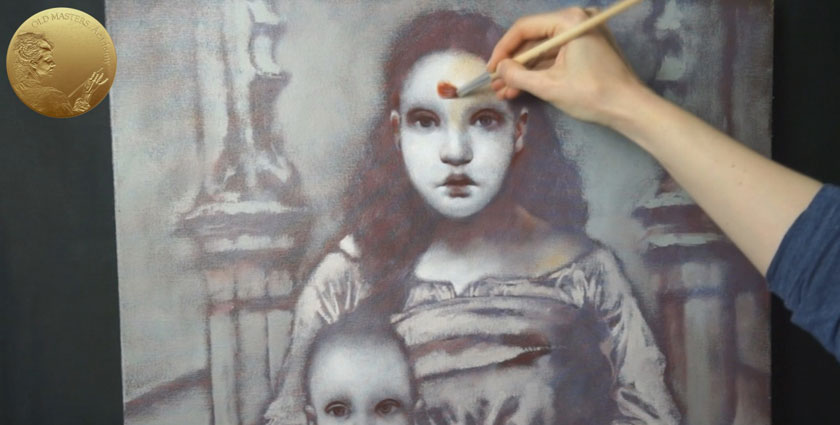
You might find that the Glaze can collect into drops. If this occurs, spread it by gently rubbing the Glaze into the surface for a longer amount of time. Smooth out the Glaze until the oil penetrates into the lower layers. You can use a Brush or your fingers when spreading the Glaze.
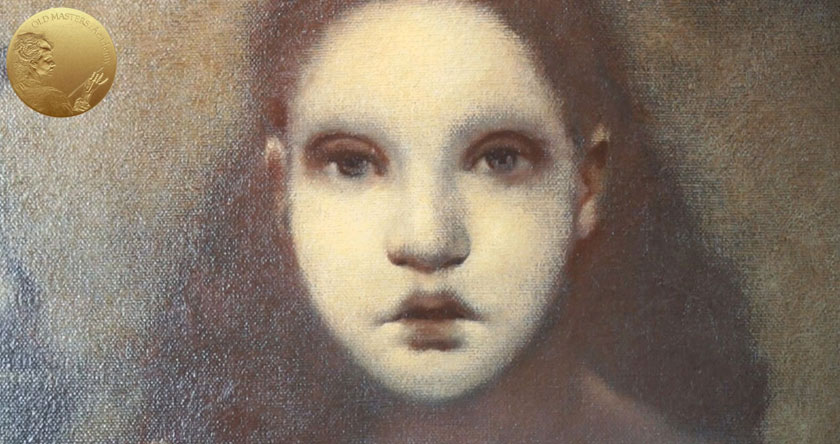
Session Two
This is how the first layer of the Glaze over an Underglazing looks like. The White Grisaille shows through the thin coat of the Glaze. The Glaze is already dry and we can continue painting.
For the next step, we prepare a new mix of Charcoal Grey and Titanium White. As a Medium, we use Stand Linseed Oil, as we did previously. We now apply a Second Glazing layer over the completely dry, previous one.
Now we increase the whiteness of the Underpainting and also increase the thickness of the paint layer. The layer is a semi-opaque Velatura – which creates a milky skin effect. At this stage, we are interested in building up the thickness of the paint layer.
Session Three
We proceed over the completely dry surface. We build up the volume of the paint layer with the same mix as before: Charcoal Grey and Titanium White mixed with Stand Linseed Oil.
Apply the Glaze more densely in lighted areas and spread the glaze more thinly in shades. Gradually lighten up the darkest areas, but still keep them showing through the Velatura.
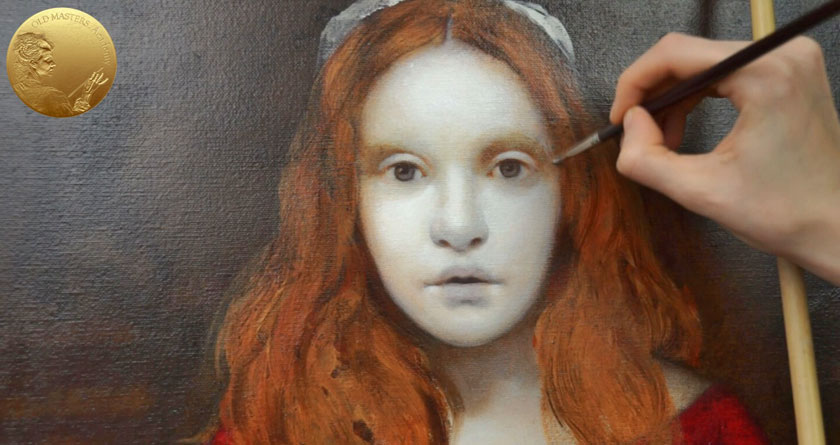
At this point, we can leave the canvas aside to dry or work on other parts of the composition.
Session Four
We prepare Yellow Ochre, Venetian Red and Burnt Sienna, thinned with Stand Linseed Oil. It’s time to add some colors to the Dead Layer Underpainting. The previous layer should be well-dried.
The very cold surface of the face will gradually begin to gain warm nuances. Here is an important tip: the layers should be thin and transparent or semi-transparent. To paint the irises of the eyes, we mix Titanium White with Charcoal Grey in various proportions.
Add warm tones around the face. Use a larger brush and do not be afraid to touch up nearby areas.
Now we need a long hair Hog Brush that can hold a lot of paint. We prepare Venetian Red and Yellow Ochre. As a Medium, we use Stand Linseed Oil.
Indicate a hairstyle with energetic loose strokes. At this stage (Underpainting) we are not looking for a precise hair color. Our aim is to define the volume of the hair mass and build-up the thickness of the paint layers.
To paint highlights, add more Yellow Ochre to the Venetian Red. Both Reddish and Yellowish layers will partially intermix.
Session Five
We continue after the previous layer has completely dried. We darken the irises with a Glaze of Charcoal Grey and place highlights with Titanium White. We work on the Underpainting of the hair by laying a transparent Glaze of Burnt Umber. As a Medium, we use Stand Linseed Oil. Use a stiff Hog Brush, which leaves a trace of hair on the canvas. Deep shadows can be treated with a soft brush and a denser yet transparent layer of paint. After that we can put the canvas aside to dry or work on other parts of the composition.
Session Six
By now, the paint layer is completely dry, so we can continue. The mix for the skin includes: Titanium White, Yellow Ochre and Venetian Red, mixed with Stand Linseed Oil.
We apply the well-diluted mix of paint over the lips, to make them even more pale. The same mix, only less diluted, can be used for the sketchily painted veil. Now we amend the face oval a bit, using the same mix of Titanium White, Yellow Ochre and Venetian Red. As always, the medium is Stand Linseed Oil. Paint over the lighted areas to even the surface of the skin and build-up additional thickness of the paint layer. All highlighted areas should be enhanced. At the same time, we can reduce the contrast by going over shaded areas with Velatura. The main work is done. We have established a base for the portrait. In the next video part, we will continue to work on detail.
